I am owner of the filter Svbony CLS, that reducing well in strong light pollution, but it’s difficult to get the correct white balance. For shooting in the suburbs, I needed a weak light pollution filter, which carefully cut off the light of sodium and mercury lamps.
Modern technologies make it possible to manufacture filters with a very interesting bandwidth. One of these filters designed for astrophotography is Optolong L-Pro. It selectively attenuates the light of sodium (589 nm) and mercury (578 and 435 nm) lamps, which are sources of urban illumination, and transmits a useful signal from stars and nebulae.

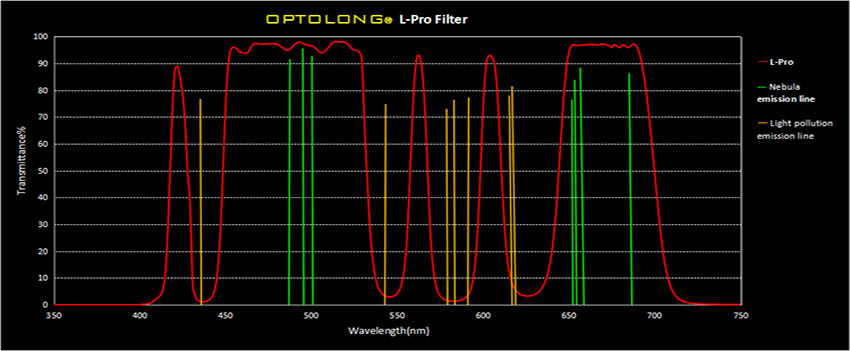
Of course, the light pollution filters are not a panacea – they allow at least something to be photographed under flare conditions, or to significantly reduce the effect of light pollution. The price for this is to increase the shutter speed or sensitivity for confident work on the object in the picture. Unlike the UHC CLS LPR filters, considered in the Optolong L-Pro review, it can also be used for objects of stellar nature (galaxies, nebulae, clusters). Due to the wide bandwidth, it is much easier to get an correct white balance with the L-Pro filter, since with the CLS UHC filter the green channel is almost the same as the blue one.
Filter arrived in a cardboard box. Inside it is a plastic box for storage in a bag. The kit also has a piece of paper with a curve of transmission.
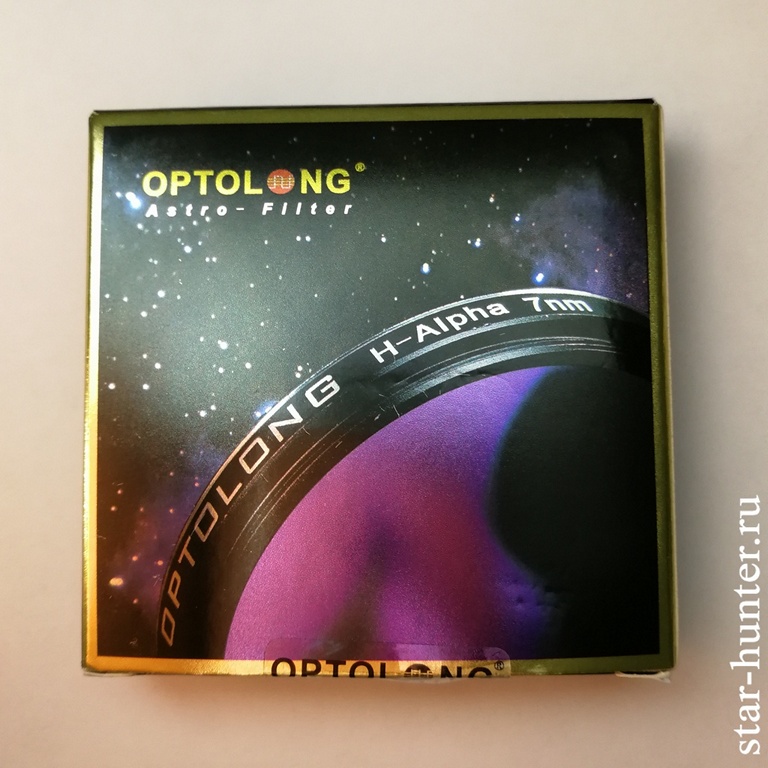
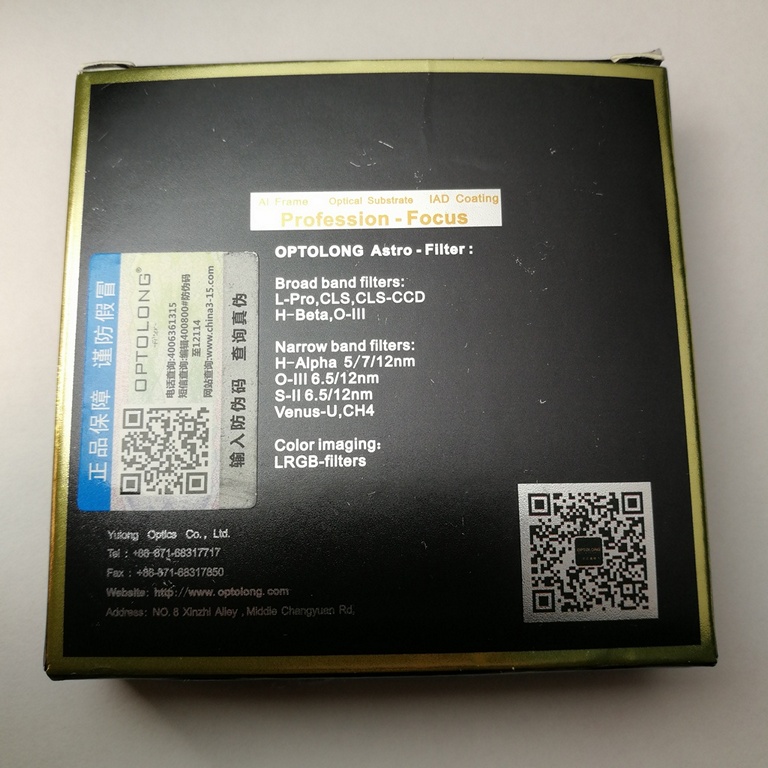
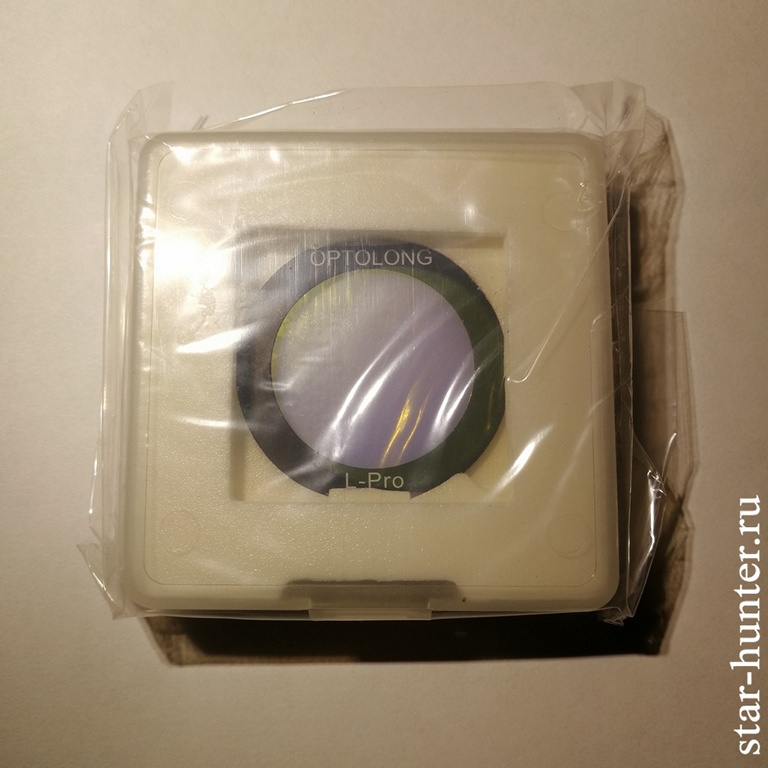
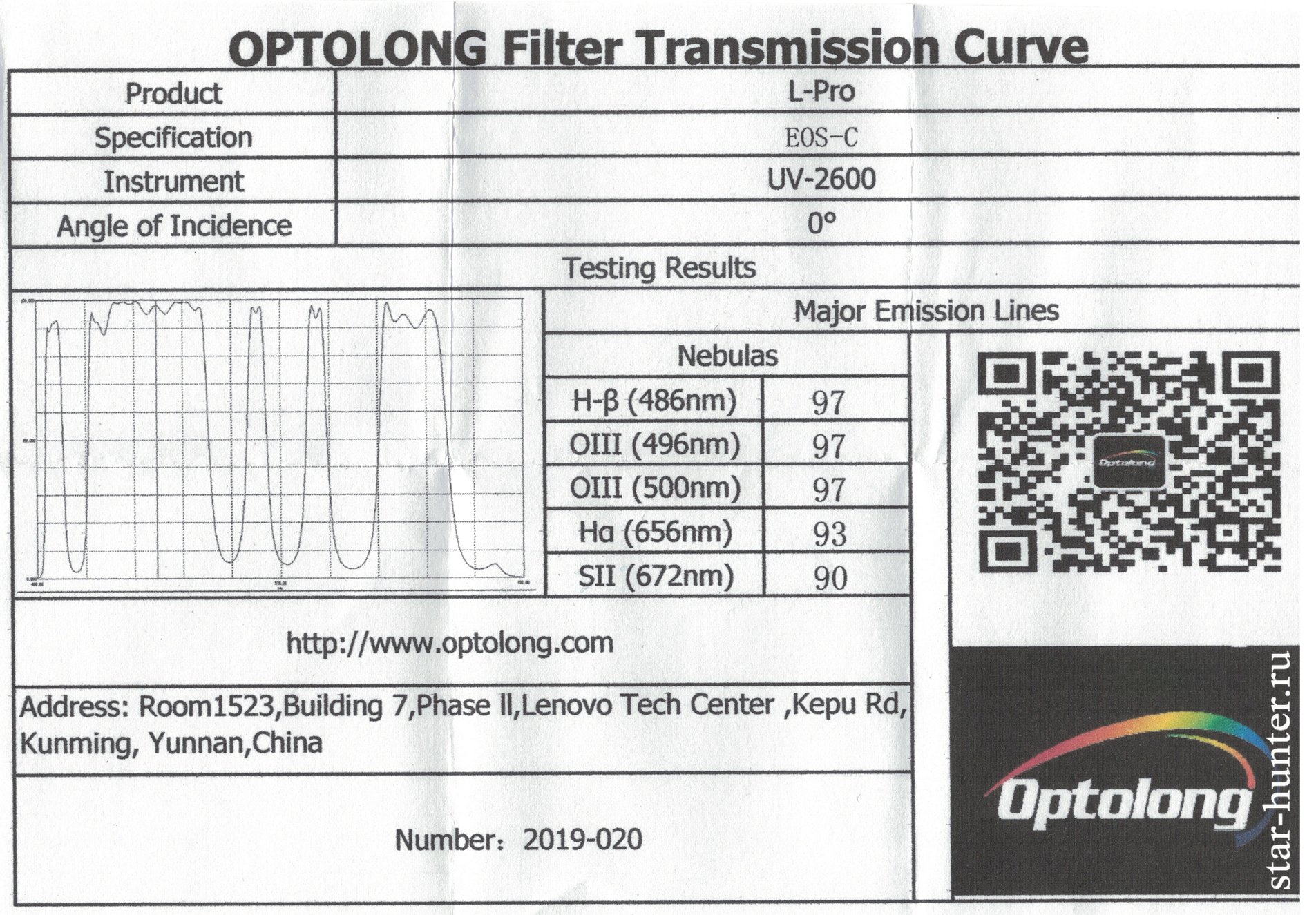
The backfill filter looks bluish, somewhat reminiscent of Baader Neodymium. Immediately noticeable difference in color between the Svbony CLS and Optolong L-Pro.
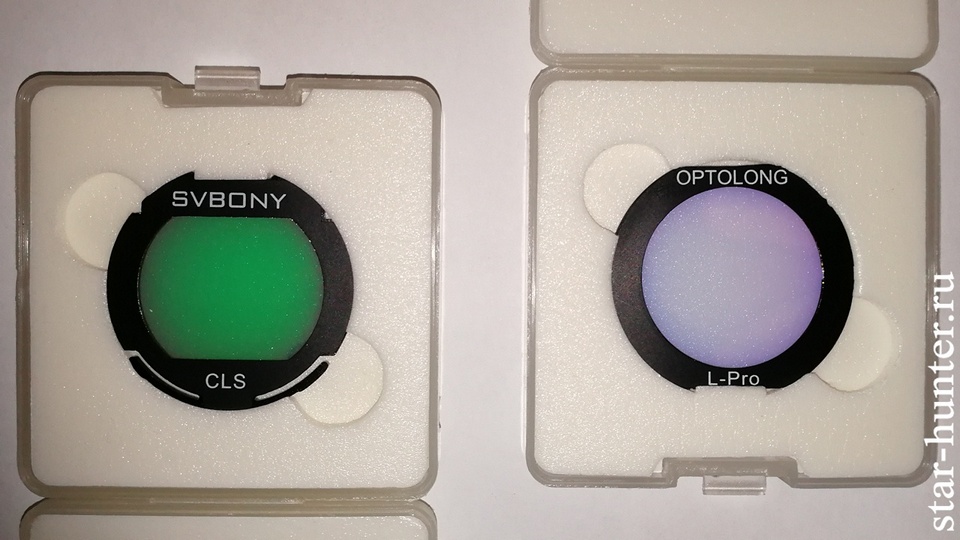
At a certain angle the surface of the filter looks like a mirror and reflects yellow. Metal filter frame. No visible defects and damages on surface. I got the old round version of the filter without spring-loaded “antennae” at the bottom, which makes it somewhat difficult to install and remove the filter. New versions of filters are already in a different body (like Svbony CLS). It was not immediately possible to install the filter – I had to use force, gently pressing it along the contour. Perhaps in this case the filter is best left in the camera for permanent use.

Testing with a simple spectroscope showed that the filter works and successfully cuts off the necessary parts of the spectrum. The Svbony CLS filter is slightly wider in the red area, but narrower in the blue-green area.

The spring sky is very scarce on hydrogen nebulae, so we had to wait for the constellation Cygnus, where the North America nebula NGC 7000 is located. Clouds hindered, I caught the nebula literally between the clouds. Frames are single and well show the difference between the filters. The capturing was in the center of Anapa, Russia. Mount – Sky-Watcher Adventurer. Canon 550D camera with blue filter removed. White balance automatic.


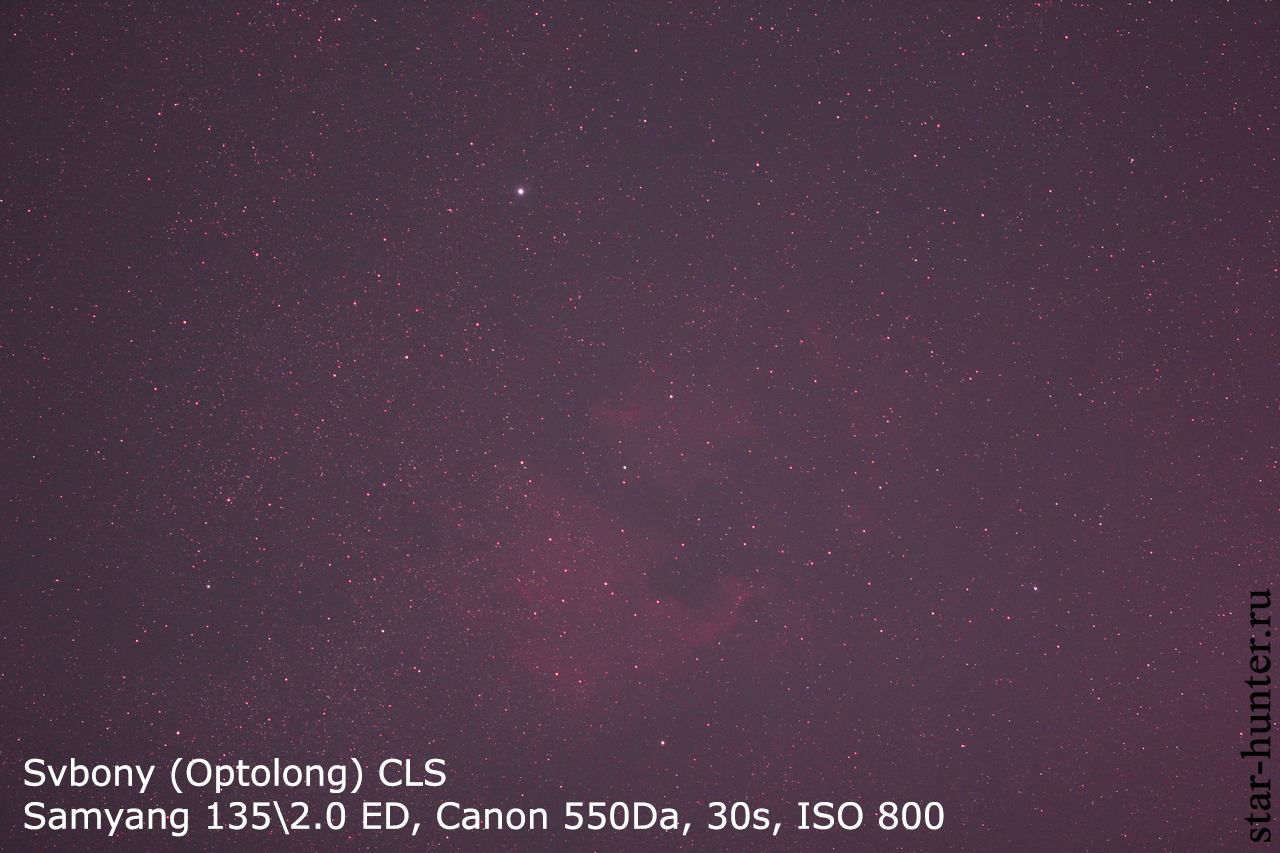
We immediately see that the L-Pro is lighter and the illumination it suppresses the expected worse. At first glance, capturing hydrogen nebulae in conditions of strong urban illumination filter Svbony CLS (or even Svbony UHC) is better, though at the cost of a twofold increase in exposure and loss of different colors. With L-Pro, the stars have a more varied color. However, with further simple processing of the material, it turned out that the L-Pro can be quite close to the image, similar to the CLS filter with similar visibility of parts in the hydrogen line. Not bad.

Large red halos when shooting through a Samyang 1352 ED photographic lens with an L-Pro filter appeared noticeably weaker than with a CLS filter. It was one of my guesses and prerequisites in the purchase of this filter. Strong chromatism in the red channel is a noticeable disadvantage of the Samyang 135/2 lens, it is very much visible with the CLS filter, creating a lot of problems at the post-processing stage of the image, so the reduction of halos made me very happy.
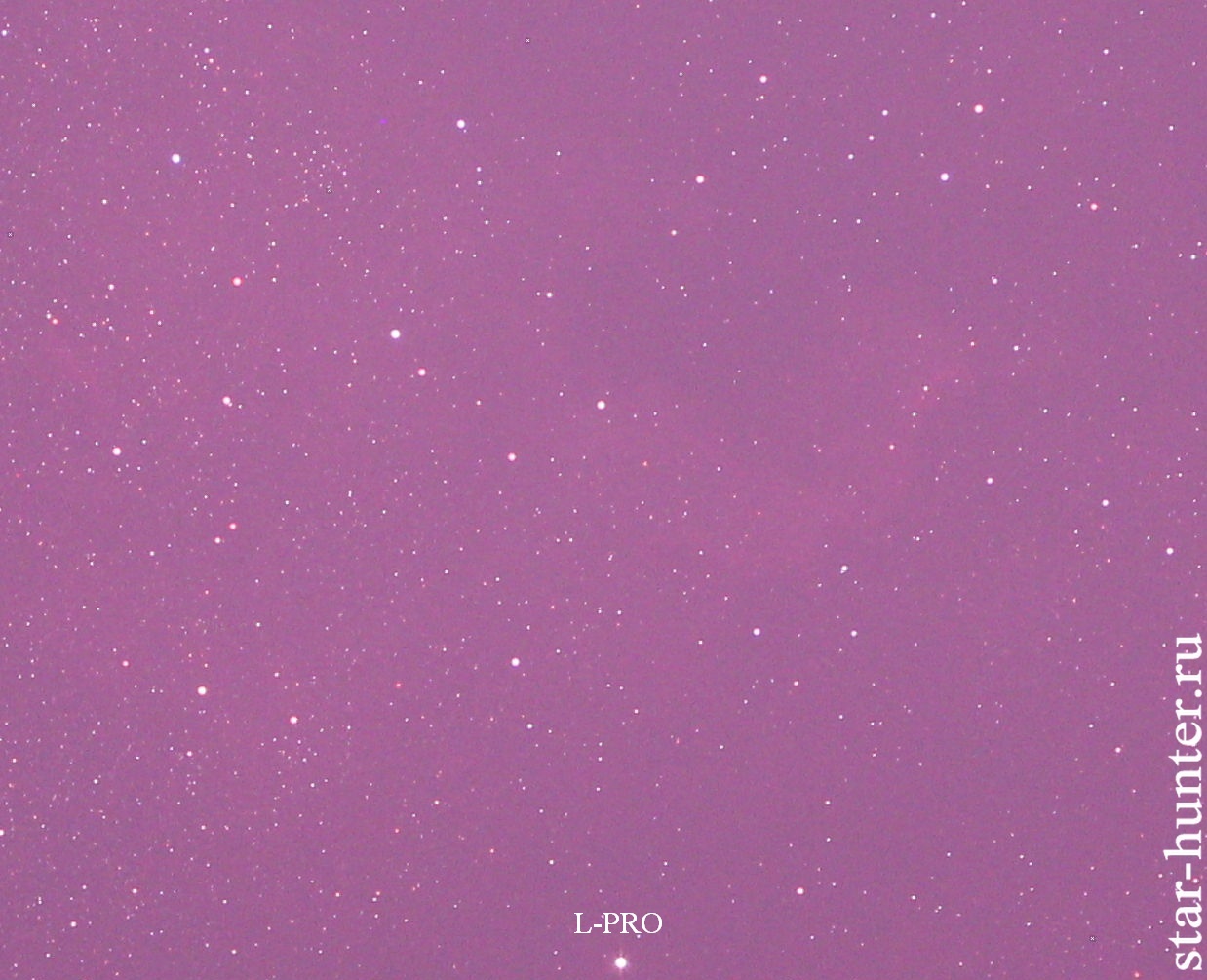
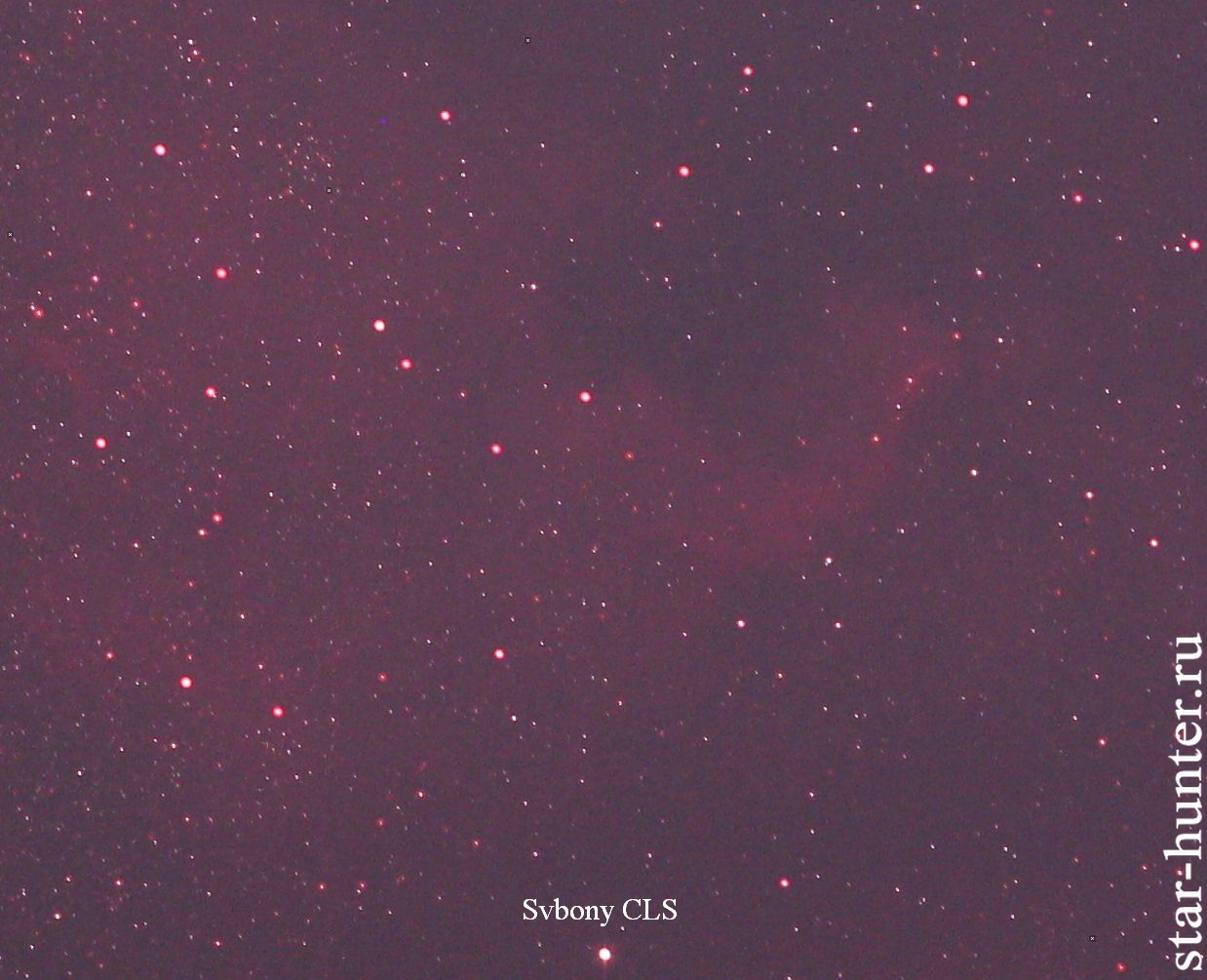
You can download RAW files here.
Verdict: Optolong L-Pro is an interesting and, perhaps, one of the most advanced light pollution filters. Under light pollution conditions, it is suitable for shooting galaxies and star clusters, slightly reducing the brightness of the object itself. Also, L-Pro will be useful for astrophotography in the suburbs, where the illumination is already weaker, but still affects the image. When using a L-Pro filter, the color balance shifts, but not as much as with CLS or UHC filters. The filter copes with its task – gently cuts off the light pollution. The potential of the filter is very large. It also fits perfectly to a Samyang 1352.0 ED photographic lens, without creating large red halos around stars like a CLS filter.
By the disadvantages of the Optolong L-Pro filter, I will take the design (difficult to insert into the chamber and difficult to extract) and the price – it is much more expensive than the CLS filter. The first disadvantage is eliminated by the purchase of a newer version of the filter with latches.
In the nearest new Moon, I will test the filter on the outskirts of the city and compare it again with the CLS for some object like Laguna nebula. It would also be interesting to compare this filter with Baader Neodymium or its equivalent.
Buy filter Optolong L-Pro as in the review can be on Aliexpress at link.
Have questions? Ask!
Added. I tested the Optolong L-Pro filter outside the city. As expected, the image is much brighter with it than with the Svbony CLS. Due to the narrower bandwidth, the CLS image is more vivid, but requires a twofold increase in shutter speed or ISO to achieve a similar level of brightness. The white balance shifts, but the image is easily reduced to normal.
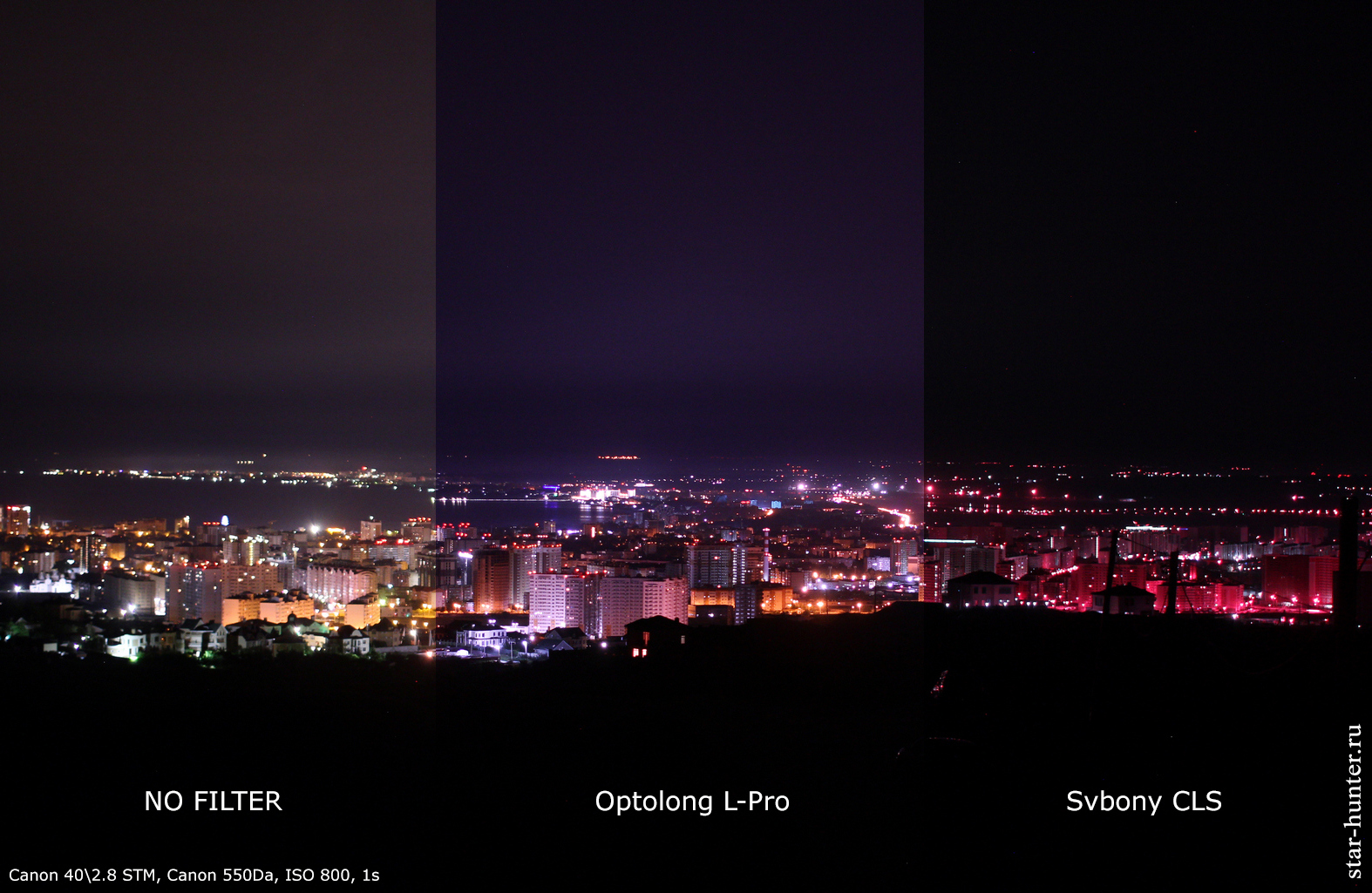
Scorpio constellation test:
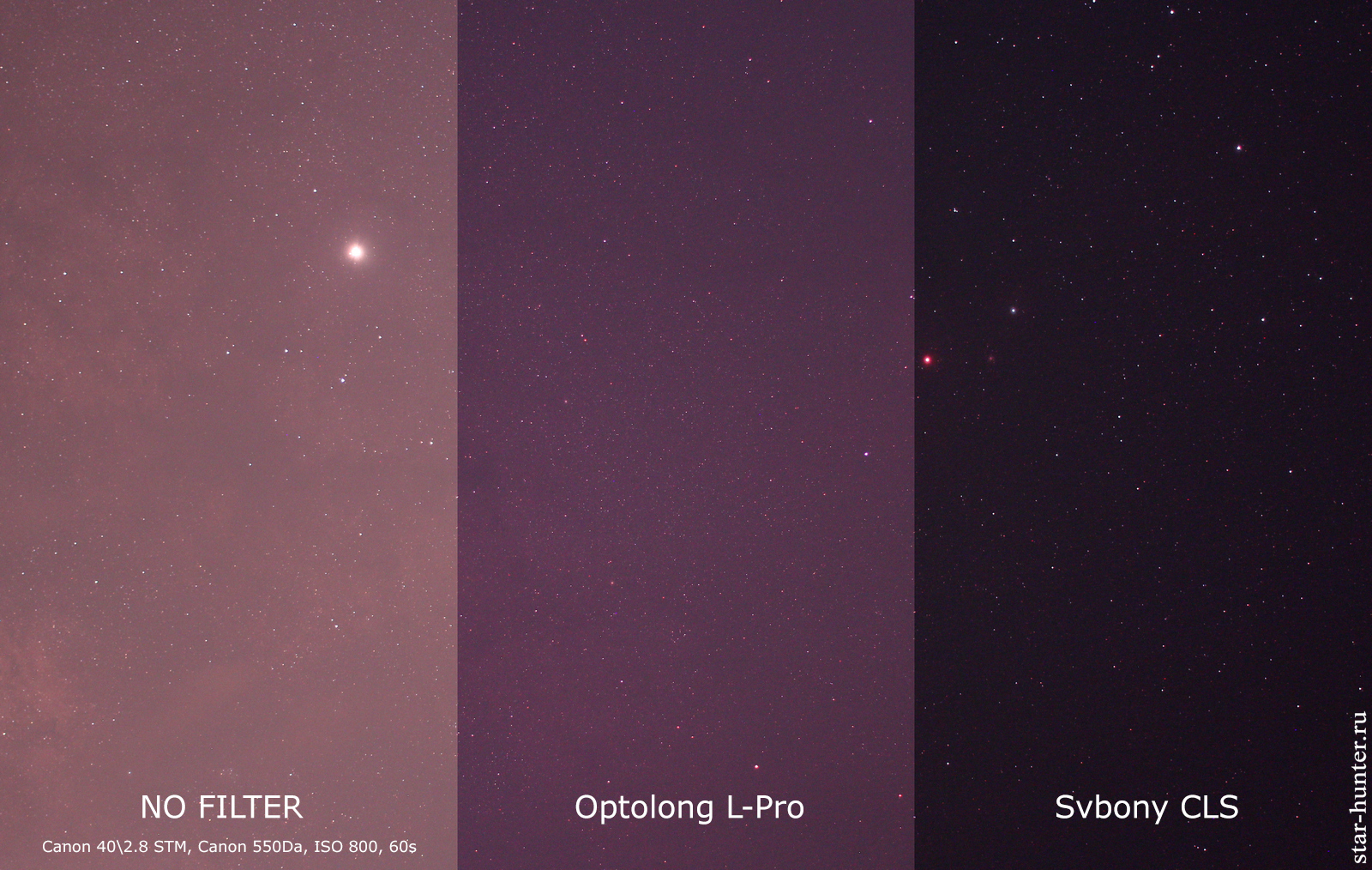
Vertical collage:
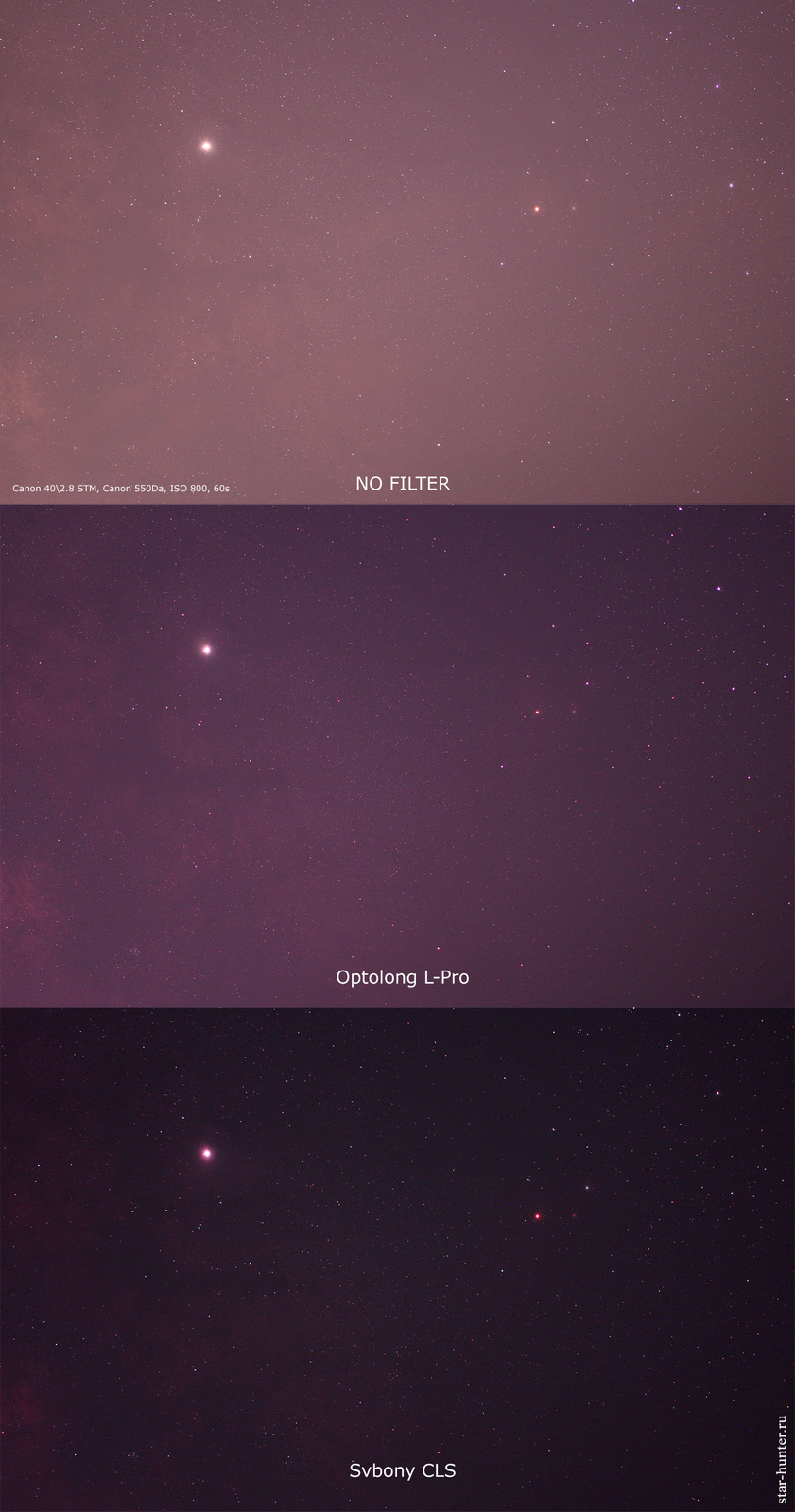
Реклама: ООО “АЛИБАБА.КOМ (РУ)” ИНН 7703380158